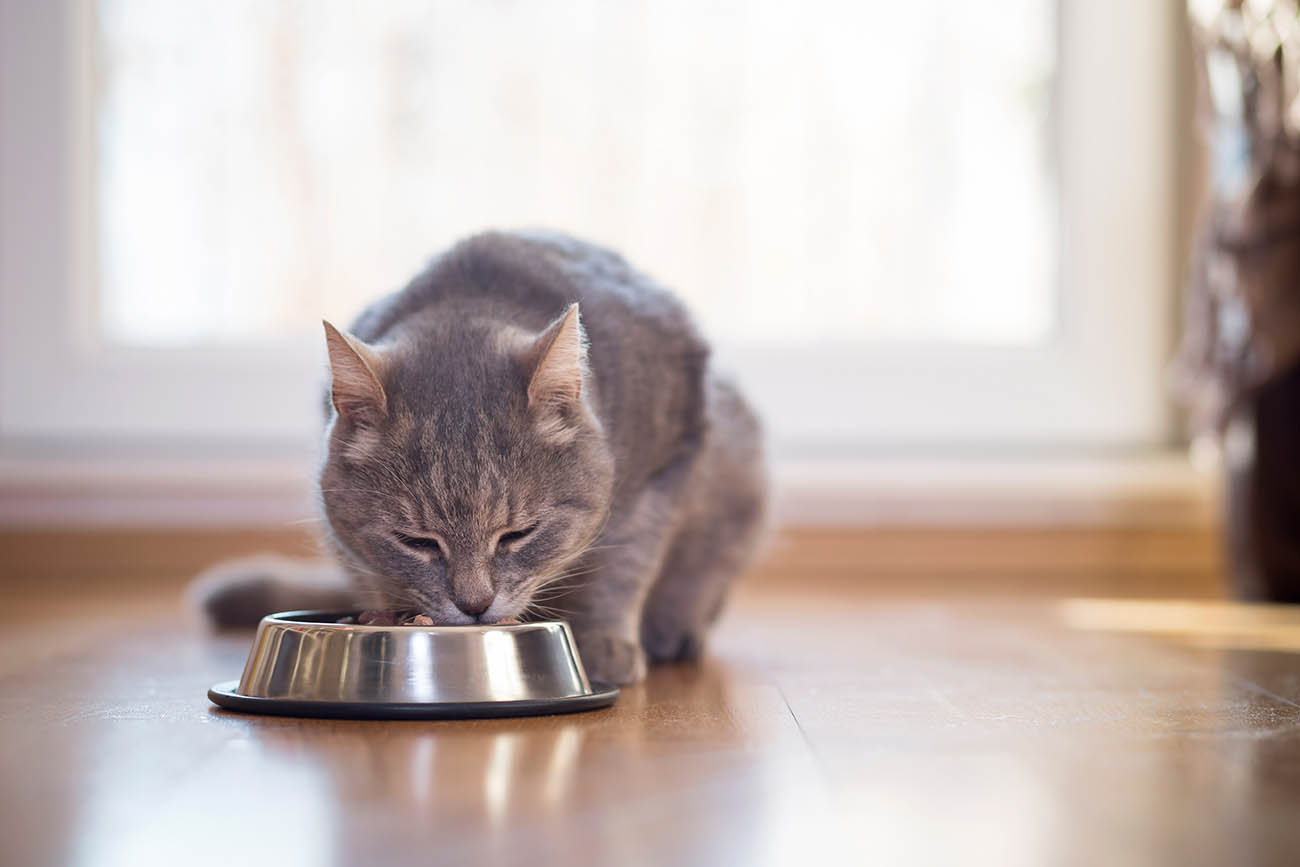Diarrhoea is less common in cats than it is in dogs, but it does occur. A cat’s normal faeces are dark brown in colour (ranging from chocolate to a brownish-grey to almost black), and are well formed. Any dramatic change in colour, softening of the faeces or wateriness needs monitoring and often further investigation.
However, there are a huge range of different possible causes – sadly, “diarrhoea” is not a diagnosis, just one symptom! The commoner causes include:
- Primary Gastrointestinal Disease
- Diet
- Sudden changes in diet will result in diarrhoea even in a healthy cat, although it’s most common in younger cats, especially when weaning.
- Eating spoiled meat or other foods (especially outdoor cats who like to forage!).
- Overfeeding can sometimes trigger diarrhoea as well, as the gut is overloaded.
- Dietary diarrhoea usually settles down on its own in a few days to a week.
- Infections
- There are a number of self-limiting viral infections that cause mild acute diarrhoea that goes away on its own, such as Coronavirus.
- More serious and even life-threatening diarrhoea may be due to viruses such as Feline Panleukopenia and Feline Leukaemia Virus in unvaccinated cats.
- Bacteria such as Salmonella and (less commonly) Campylobacter can also cause acute and often severe diarrhoea in cats, dogs and humans, and are easily spread in faeces.
- Some amoeba-type parasites, such as Giardia and Tritrichomonas often cause chronic and sometimes acute diarrhoea in cats.
- Heavy worm burdens may occasionally cause mild diarrhoea as well.
- Inflammatory Bowel Disease (IBD)
- This is a common cause of chronic diarrhoea, due to abnormal inflammation of the gut lining.
- There are a number of different forms, some of which may also result in vomiting, and all of which can lead to ongoing weight loss and emaciation.
- Intestinal tumours
- Most commonly alimentary lymphoma, a cancer of immune cells that damages the gut wall.
- There are also a range of polyps and other growths that, although uncommon, occasionally result in diarrhoea.
- Tumours of all kinds are more common in older cats.
- Systemic Diseases
- Hyperthyroidism
- An overactive thyroid gland results in increased gut movement and therefore diarrhoea.
- Other symptoms include weight loss, aggression, hyperactivity and ravenous appetite.
- Liver disease
- Because the colour of faeces is largely due to bile salts, liver disease often causes pale faeces.
- Other symptoms include thirst, lethargy, loss of appetite and sometimes jaundice (yellowing of eyes and gums).
- Kidney failure
- Diarrhoea may occur, but more common symptoms are weight loss, increased thirst and increased urination.
- Poisoning
- Some irritant toxins and some drugs (such as NSAID painkillers) may cause diarrhoea.
- Hyperthyroidism
- Diet
Why is a bit of diarrhoea a problem?
Well firstly it’s not nice for you and it’s not nice for them either! Ongoing diarrhoea also leads to dehydration, which can lead to shock and even be fatal if not corrected. In addition, infectious agents are transmitted in the diarrhoea – so other cats or even people may become infected after contact with it. Finally, diarrhoea may be a sign of a more serious underlying condition.
What should I do about it?
If your cat is otherwise well and the diarrhoea is mild, close monitoring and feeding an easily digestible diet (chicken or white fish, or a commercial intestinal diet) for a few days will often see the symptoms resolve on their own. Other supportive care includes the use of probiotics and antidiarrhoeal pastes, and electrolyte mixtures to drink.
However, if the problem isn’t resolving on its own after 2-3 days, if it is very severe or contains blood, or if your cat seems unwell or unhappy in themselves, we need to see them.
How do you find out what’s wrong?
There are a number of different diagnostic methods we can use to try and work out what’s causing the diarrhoea. These may include:
- Blood and urine testing, to rule out systemic disease.
- Faeces tests, to look for parasites and disease-causing bacteria.
- X-rays and ultrasound of the abdomen.
- Endoscopy, where we pass a flexible telescope into the gut and look at the inside; we can also take samples of the gut wall to send away for testing – this is really useful for diagnosing IBD and Lymphoma.
What is the treatment?
Well, it depends on what the cause is! For most mild acute diarrhoeas, the supportive treatment listed above is usually sufficient, whether it’s viral, dietary or bacterial.
In more severe cases, treatment of the specific disease is needed:
- Antibiotics are sometimes (but not always) indicated for bacterial infections.
- Antiparasitic drugs against worms or amoebae.
- Immunosuppressive drugs against IBD.
- Chemotherapy and/or surgery to treat tumours and polyps.
If your cat has diarrhoea and you don’t know why, call us for advice.



